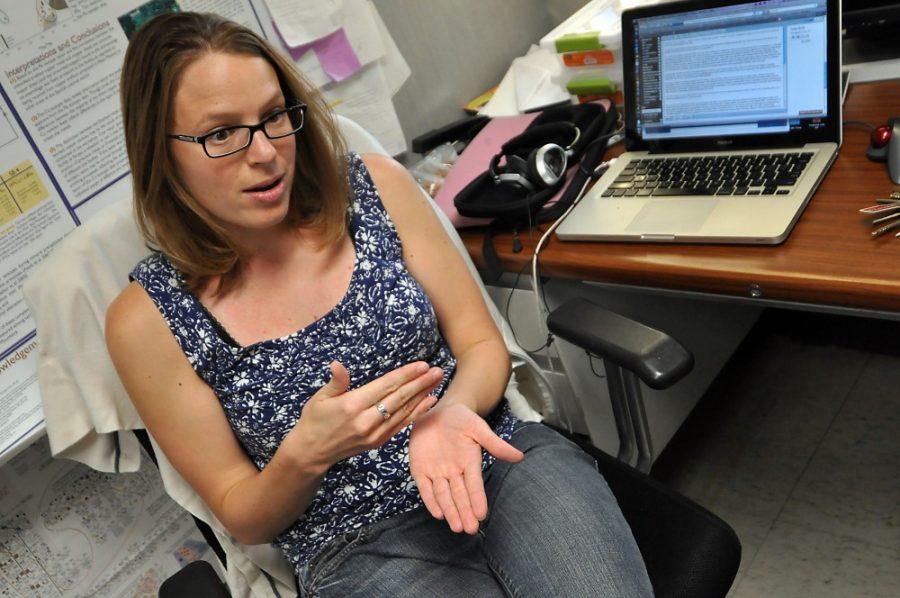Alyson Thibodeau, a doctoral student in the Department of Geosciences, is the winner of the 2011–2012 Florence C. and Robert H. Lister Fellowship. The fellowship assists graduate students who show promise in contributing to the archaeological knowledge of American Indian cultures in the Southwest. Fellows receive a $7,000 stipend for the final stages of their research and writing their dissertations.
Daily Wildcat: The Lister Fellowship will help you finish your dissertation, what’s it on?
Thibodeau: The pre-Hispanic turquoise trade in the Southwest U.S. The ultimate goal of my dissertation and research is to determine if societies in the Southwest traded turquoise down to Mesoamerica. Did the Aztecs, who made beautiful turquoise mosaics, use turquoise that was traded from the Southwest, or did they have access to turquoise sources somewhere closer? “Is turquoise something that’s moving thousands of kilometers from the Southwest down to Mesoamerica or not?” has been a really big question in both American and Mesoamerican archeology.
What’s the significance of turquoise?
In the Southwest, turquoise is a mineral used to make items both ritually and ceremonially important. It was used to make all sorts of jewelry and sometimes you find it in burials. It’s found all over archeological sites in the Southwest and archeologists are interested in reconstructing where the turquoise in those archeological sites comes from. It can tell them about exchange networks or social connections between sites. The present day political boundaries obviously don’t apply, but when I say Southwest I’m referring to Arizona, New Mexico, Northern Mexico, Southern Colorado, maybe Southeastern California, Southeastern Nevada and Southern Utah.
What part of your research do you find the most interesting?
I do a lot of mass spectrometry, which is how I measure the isotope ratios. Sitting at the mass spectrometer, especially when you’re analyzing archeological samples and you have a hypothesis of where they might come from, and watching the machine spit out the numbers is really exciting because you immediately know if you’re right or wrong. You find that your hypothesis is supported or you find something completely surprising, and then you have to figure out how to interpret that data.
How about reconstructing history? What’s that like?
You’re telling a story about what people did and on some level, why they did it. You don’t analyze artifacts just because you can, you set up interesting questions to answer. My real question is, how can we use turquoise found in the archeological record to reconstruct exchanged relationships? How can we use turquoise to better understand how the different cultures and different societies of the Southwest US are connected to one another?
You’re in the geosciences department, but the award is from an archeological organization. How does it feel to be recognized by them?
Because I’m so interdisciplinary, I’m sort of on the edge of geoscience and anthropology, sometimes you worry about being accepted by one community of scientists or the other. It was really exciting to have archeologists acknowledge the contribution I’m trying to make to that subject matter. I’m very interested in the archeology of the Southwest and there are a lot of problems that can be solved with this sort of expertise that I have.
How will you measure if you made the most out of your fellowship?
First and foremost, if I finish the dissertation within the fellowship period. I’d also like to use it to reach out to the larger archeological community from the position it puts me in as fellow for this organization to make collaborative projects to look at turquoise in archeological sites, and see if we can address questions that maybe we can’t address any other way.









